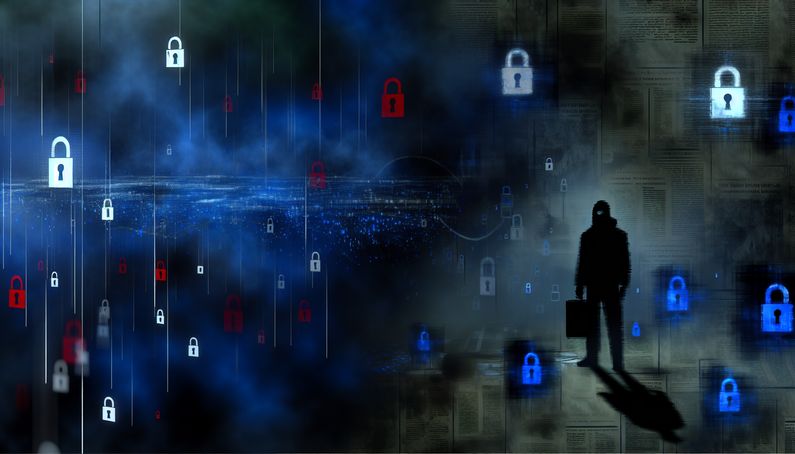
Understanding the Ransomware Attack on Lee Enterprises
The ransomware attack on Lee Enterprises, a leading publishing company in the United States, highlights the critical vulnerabilities present in today’s digital infrastructures. On February 3, 2025, the company was targeted by the Qilin ransomware gang in a sophisticated cyberattack. This breach involved unauthorized access to the company’s network, exploiting common entry points such as phishing emails and compromised credentials. The attackers exfiltrated 350 GB of sensitive data, including government ID scans and financial documents, before encrypting critical systems, effectively holding the company hostage (BleepingComputer).
The Anatomy of a Ransomware Attack: Lessons from Lee Enterprises
Initial Breach and Entry Point
The ransomware attack on Lee Enterprises, a major publishing giant in the United States, reveals how cybercriminals can exploit digital vulnerabilities. The initial breach occurred on February 3, 2025, when unauthorized access was gained to the company’s network. Although the exact entry point has not been publicly disclosed, common vectors for such attacks include phishing emails, compromised credentials, or exploiting software vulnerabilities. The attackers, identified as the Qilin ransomware gang, claimed responsibility for the breach (BleepingComputer).
What is Ransomware?
Ransomware is a type of malicious software designed to block access to a computer system or data until a sum of money is paid. It often spreads through phishing emails or by exploiting vulnerabilities in software, making it a significant threat to organizations worldwide.
Data Exfiltration and Encryption
Once inside the network, the attackers exfiltrated a significant amount of data, totaling 350 GB, which included 120,000 documents. These documents contained sensitive information such as government ID scans, financial spreadsheets, and non-disclosure agreements. The attackers then proceeded to encrypt critical applications and files, effectively locking the company out of its own systems. This dual approach of data theft and encryption is a hallmark of modern ransomware attacks, where the threat of data release is used as leverage to demand ransom payments (BleepingComputer).
Impact on Operations
The ransomware attack had a profound impact on Lee Enterprises’ operations. The company was forced to shut down many of its networks, leading to widespread disruptions in printing and delivery for its newspapers. This outage also affected corporate VPNs and access to internal systems and cloud storage. The operational disruption highlights the critical dependency on digital infrastructure and the cascading effects a cyberattack can have on business continuity (BleepingComputer).
Response and Mitigation Efforts
In response to the attack, Lee Enterprises initiated an investigation to determine the scope of the breach and the extent of the data compromised. The company also filed a report with the Securities and Exchange Commission (SEC), disclosing the encryption of critical applications and the exfiltration of files. Mitigation efforts likely included isolating affected systems, restoring from backups, and enhancing security measures to prevent future breaches. However, the effectiveness of these efforts depends on the speed of response and the robustness of the company’s incident response plan (BleepingComputer).
Lessons Learned and Recommendations
The attack on Lee Enterprises provides several lessons for organizations looking to bolster their cybersecurity posture. First, it underscores the importance of regular security training and awareness programs to prevent phishing attacks and other social engineering tactics. Second, it highlights the need for comprehensive incident response plans that include clear protocols for isolating affected systems and communicating with stakeholders. Third, organizations should prioritize regular backups and ensure they are isolated from the main network to prevent ransomware from encrypting backup data. Lastly, investing in advanced threat detection and response solutions can help identify and mitigate threats before they escalate into full-blown attacks (BleepingComputer).
The Role of Emerging Technologies
Emerging technologies like Artificial Intelligence (AI) and the Internet of Things (IoT) are reshaping the cybersecurity landscape. While they offer new opportunities for enhancing security measures, they also present new vulnerabilities that can be exploited by cybercriminals. Organizations must stay informed about these technologies and adapt their security strategies accordingly.
Final Thoughts
The Lee Enterprises data breach underscores the critical need for robust cybersecurity measures and proactive incident response strategies. This incident illustrates the devastating impact a ransomware attack can have on business operations, from disrupting daily activities to compromising sensitive data. Organizations must prioritize cybersecurity training, develop comprehensive incident response plans, and invest in advanced threat detection technologies to mitigate such risks. The lessons learned from this attack are invaluable for any company aiming to safeguard its digital assets against the ever-evolving landscape of cyber threats (BleepingComputer).
References
- BleepingComputer. (2025). Media giant Lee Enterprises says data breach affects 39,000 people. https://www.bleepingcomputer.com/news/security/media-giant-lee-enterprises-says-data-breach-affects-39-000-people/



